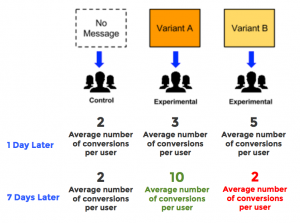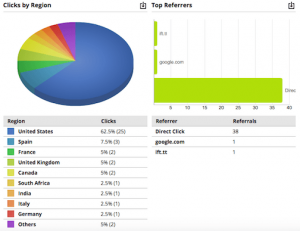Localization is far from new, although the term may seem foreign to you. If you studied a business degree at college, it probably came under the umbrella of global marketing. Companies large and small have been adapting their products to suit foreign markets for as long as trade existed. Thinking global and acting local for centuries, in fact.
Just think about the English and their tea. They don’t drink it the same way that they do in the Orient. The don’t freeze it with ice and lemon like they do in the States either. Americans buy bigger cars, wider refrigerators and generally have more space than they do in Japan or Europe. Product localization (or adaptation) has always been a vital part of global business. But what about a localized message?
Speak to Your Customers in Their Language
Any smart marketer knows that the way to their customers’ hearts is by sending the right message at the right time. Making them feel as if you’ve done your homework. Like you understand their wants, needs and pain points and that – fundamentally – you speak their language.
With tech disruption everywhere you turn, the rise of D2C, peer to peer and competition all around; marketers can no longer get away with one-sided sales speeches. Millennials are increasingly demanding. They want a more authentic way of going on vacation. A more enriching shopping experience. Doorstep delivery within a few hours, or, at the very least, a tailored marketing message that resonates with them on their level.
More Than Translation
You use big data and predictive marketing. Your social media is buzzing and your influencer campaign enviable. In English. To your US customer base. But how do you replicate this success in overseas markets? The first step in the process, as you might have guessed is translation. But it’s going to take a lot more than running your website through Google Translate to win over the hearts and minds of your foreign audience.
Not only do you need to ensure that your message is free from embarrassing, awkward or illegal mistranslations or promotions, but you’ll need to study your target audiences well. Just because you do business in Portugal, doesn’t mean that the Portuguese language version of your site will make do for a Brazilian audience. You have completely different vocabulary to consider. The way they structure their sentences and communicate.
Even more importantly, you’re up against a completely new customer base with different ideals, values and beliefs. A diverse culture, climate and society. An offer than may work in Lisbon could sink like a lead balloon in Rio de Janeiro.
President of Day Translations, Sean Hopwood, knows a thing or two about cultural differences. He says emphatically, “you simply can’t go blazing into a new market with a complete disregard for cultural nuances, customs or taboos. A lot of companies have done that and their mistakes are well documented case studies today.”
I hate to name and shame, but the list of monumental flops taking their brands global is long. The American Dairy Association, for example, rolled out their successful “Got Milk?” campaign to Spanish-speaking countries. Where it was translated into “Are You Lactating?” Which is a little too personal for most people’s liking.
Measurements, Format, Fonts
Localization of your software goes beyond translation of your words. Once you’ve studied your market using local resources, visiting the country or scouring the internet, you’ll need to go one step further. Once you’ve grabbed the cultural bull by the horns and come up with a targeted offer for a local audience, you’ll need to another step further.
Localization takes into account the compatibility of formats, such as time and date, which are displayed differently in the US and Europe. Measurements, currency, the appropriateness of images and colors are also important. Pictures of buxom blonds on the beach might work well in Germany, but may be banned in the United Arab Emirates.
Coding
There are a lot of stakeholders involved in a fully-fledged localization project and you’ll run into some roadblocks on a coding and design level as well. To take into account language differences and discrepancies, you’ll need to leave plenty of space when designing your site and use universal coding, such as Unicode, to ensure compatibility across servers and platforms.
SEO and ASO
A localized site will be ranked higher in Google. Or Bing or Baidu. In fact while we’re on the topic of search engines, not every country uses the same ones. You need to find out the most popular search engines in your target market and how to use them.
Search is increasingly local. You need to know the search terms used, make sure that your site is localize and optimized and that you’re bidding on the right keywords. Remember that seasons change from the Southern to Northern hemispheres and that Australians and Brits go on “holiday” and not “vacation.”
Localization is an enormous task, especially when you contemplate the fact that there are thousands of languages, billions of people and plenty of scope for error. It’s not a game for beginners and it’s not a place where corners should be cut. And it certainly isn’t just a buzz word. So if you want to gain access to international markets and potentially unlimited sales, it’s time you started hanging with the locals.
Digital & Social Articles on Business 2 Community(81)





